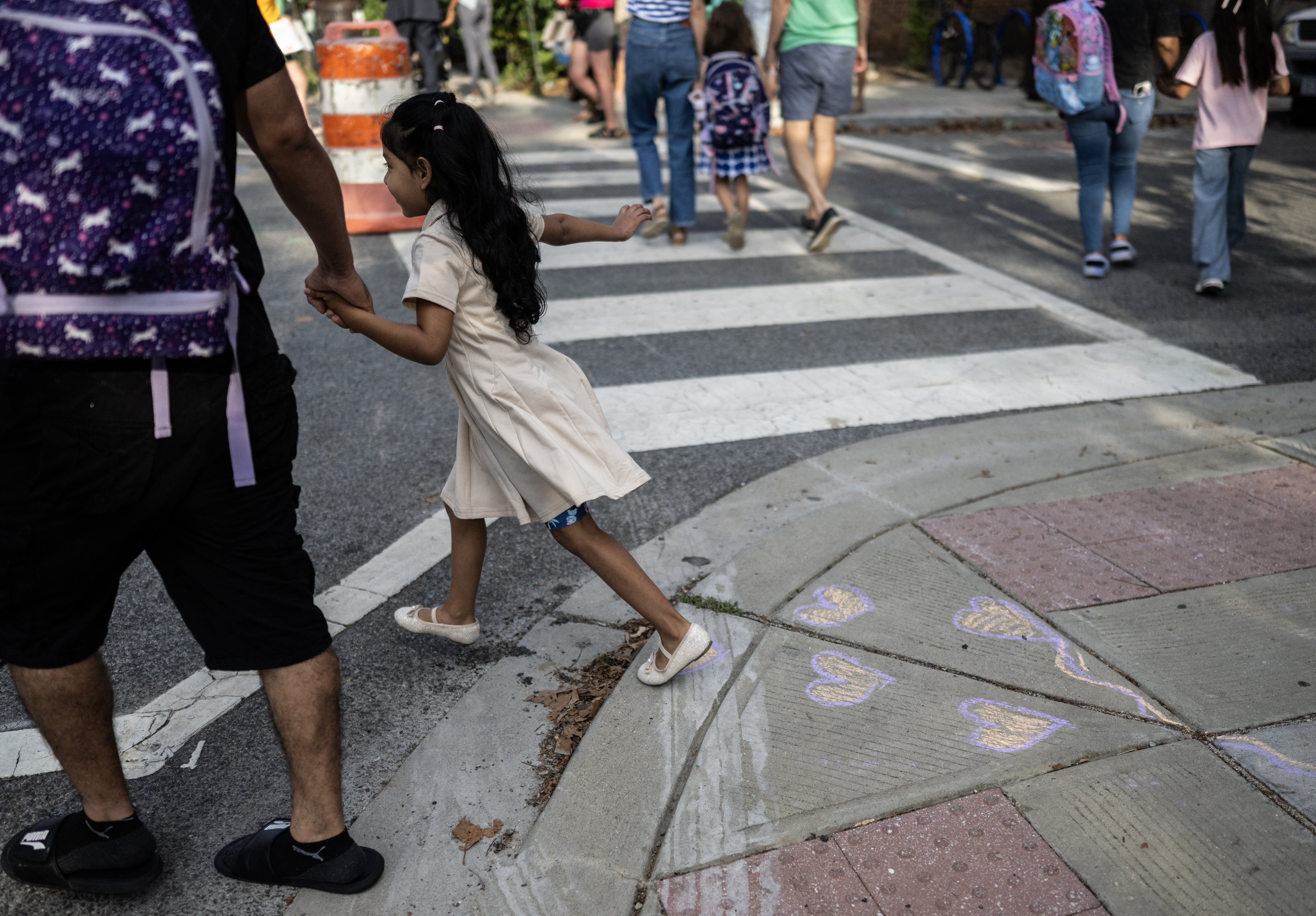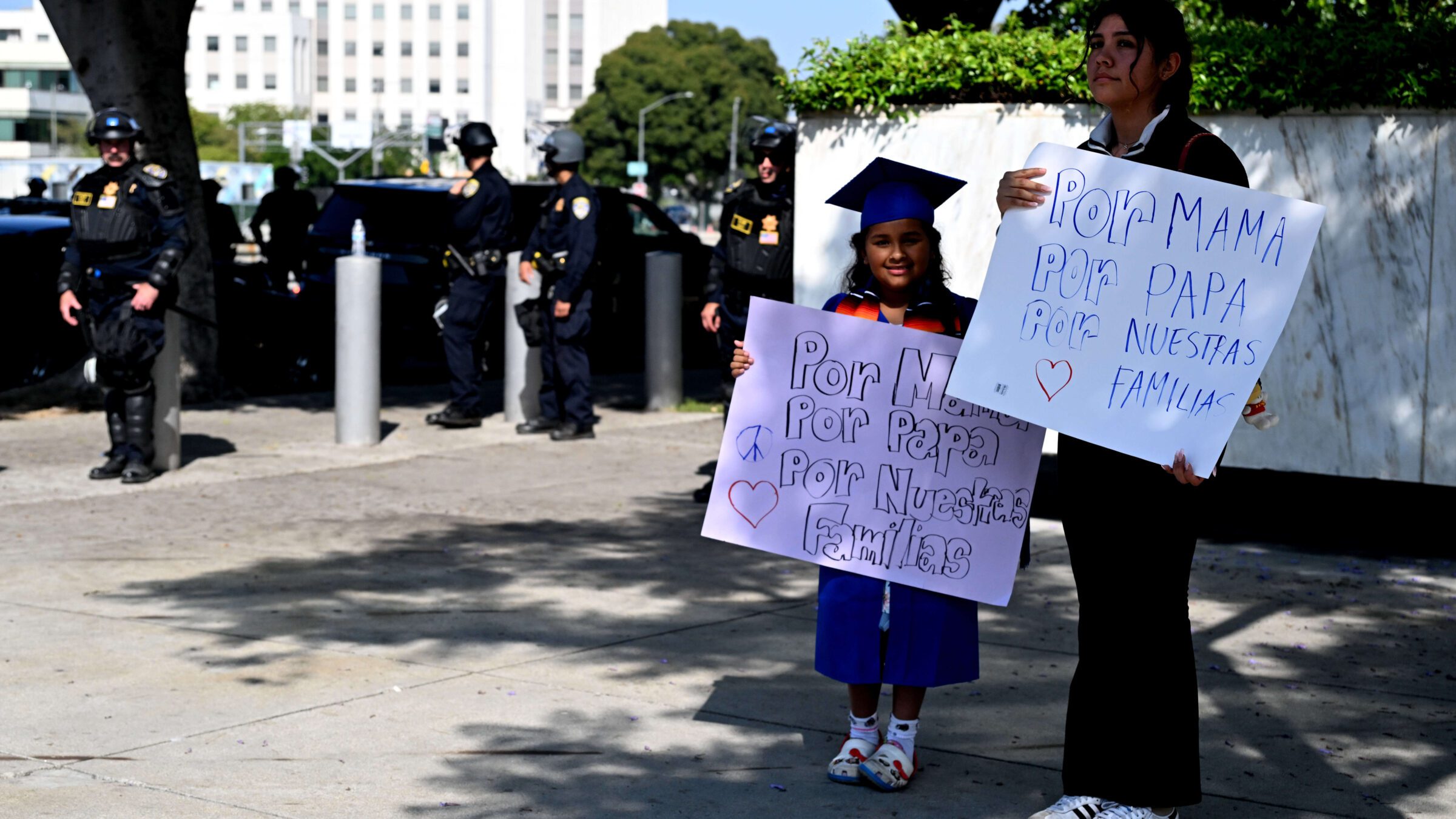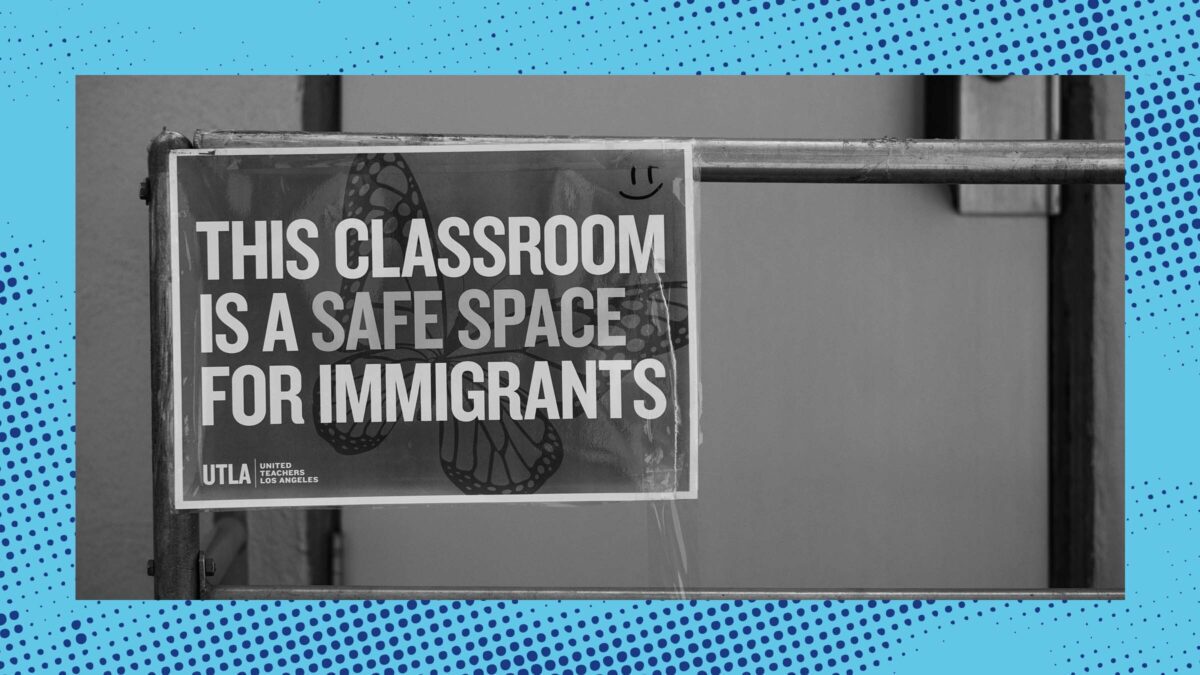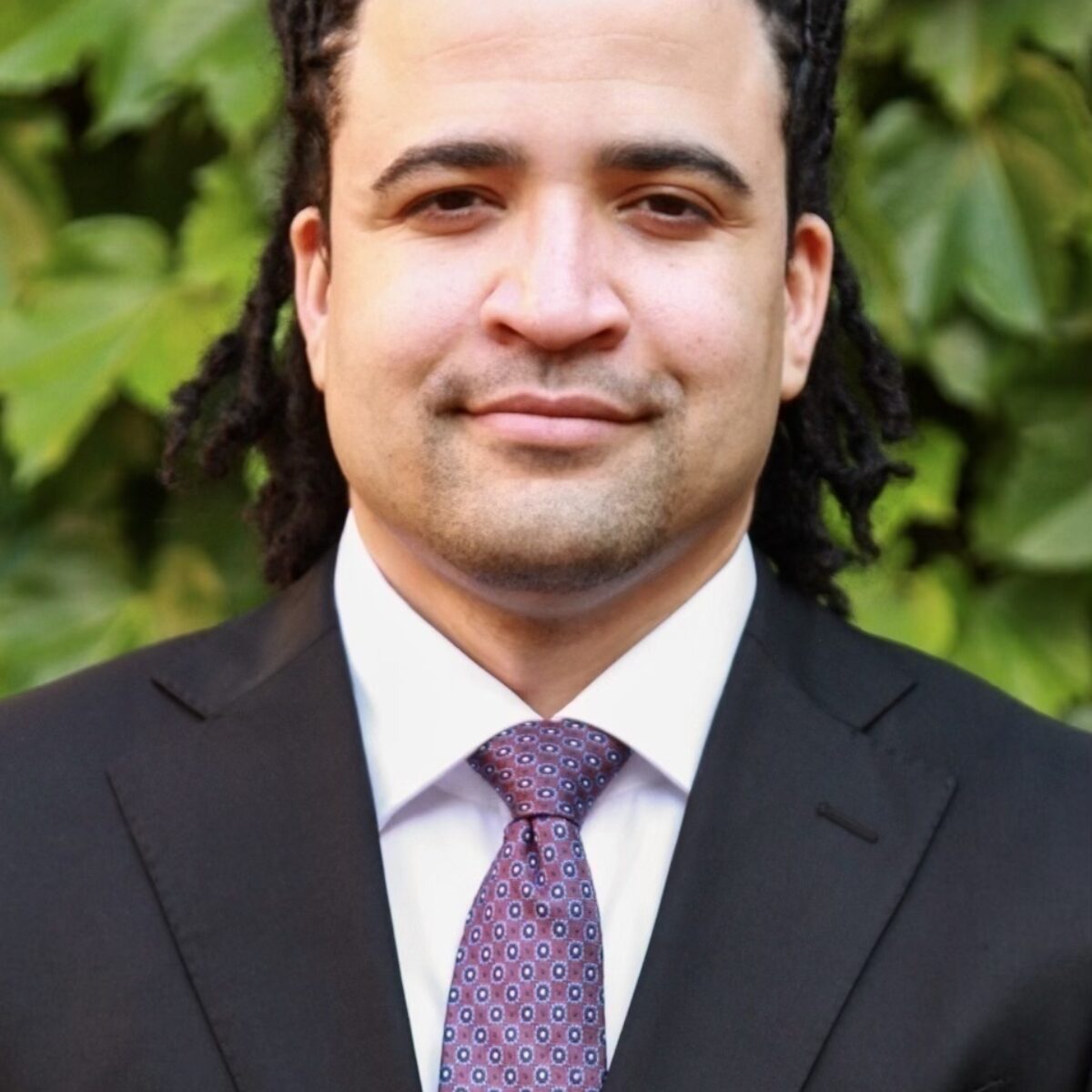Last week, the Supreme Court’s conservative supermajority stayed a lower court ruling that had barred immigration stops based on racial profiling in Los Angeles, a county of more than 10 million people, nearly half of whom are Latino. Judge Maame Ewusi-Mensah Frimpong’s order had prohibited federal agents from treating race, language, place of gathering, or type of work as grounds for suspicion. By staying her injunction, the Court effectively blessed tactics that cast entire communities—Latino workers, day laborers, and Spanish-speakers, citizens and noncitizens alike—under suspicion by default.
But the Trump administration’s project of extending immigration enforcement does not stop in the city streets or at the workplace—it now reaches the schoolhouse gate. In January, the White House scrapped a Biden-era policy that had shielded “sensitive locations”—schools, churches, hospitals—from Immigration and Customs Enforcement operations. In place of that policy came a secret directive handing ICE agents sweeping discretion to act in precisely those spaces. The Court’s ruling on Monday compounded the effects of this shift, blessing constitutionally dubious stops and searches in the name of “whatever Trump wants goes.”
For the nation’s 16,000-plus school districts, the result is unmistakable: What was once a guarantee that families could approach schools without fear of arrest has been dismantled, folded into an expanding machinery of unlawful enforcement targeting immigrant communities. This campaign is part of a broader conservative push to invert the function of public education, transforming a constitutionally protected refuge of learning and community into a site of surveillance and fear.
The effects are already visible. In Washington, D.C., immigration raids near schools have forced families to reorganize their daily lives, as the daily rituals of school drop-off and pick-up are now shadowed by the real possibility of arrest and deportation. Parents have formed “walking school buses” to escort children safely to class, and take turns giving daycare employees rides to work so that they don’t risk getting arrested during their commutes.
Families describe the toll this has already taken on the community, as absences pile up among students too frightened to leave their homes. “We’ve always welcomed law enforcement to come into our buildings to talk to our students,” one parent told the Post. “But right now, instead of making us feel safe, they’re making us feel scared and intimidated.”
And that fear is not unfounded—it’s policy, backed by billions in new funding. ICE’s budget has swelled by nearly $20 billion since last year, with $76 billion more on deck over the next four years—levels that place the agency’s resources on par with some of the world’s largest militaries. As of early August, deportations averaged 1,500 a day—nearly double the rate during the first six months of Trump’s second term.
Local school districts now face a brutal—and frankly unfair—choice: either submit to becoming extensions of federal immigration enforcement, or insist on their role as sanctuaries of community, learning, and trust. The stakes could not be higher—for immigrant families who are already afraid, and for a public education system that depends for its legitimacy on being open, inclusive, and safe for every child.

Volunteers accompany children to school in Washington, D.C., in response to the Trump administration’s deportation raids, August 2025 (Photo by ANDREW CABALLERO-REYNOLDS/AFP via Getty Images)
A key legal tool for protecting immigrant students is FERPA—the Family Educational Rights and Privacy Act—a federal law that gives parents the right to access their child’s educational records and, just as importantly, prevents local schools from disclosing personally identifiable information without parents’ consent. FERPA contains exceptions, such as compliance with a lawfully issued subpoena, but its animating principle is clear: Student records exist to serve families, not to expose them.
In an era of heightened immigration enforcement, faithfully honoring FERPA’s protections is not optional for educators—it is essential. And the work of honoring it starts with practical safeguards that schools can put in place to translate the law’s principles into daily practice.
The first safeguard schools can take is minimizing the amount of personal information they collect in the first place. Enrollment packets in many districts still ask for Social Security numbers, immigration documents, or parental employment details—none of which are required for a child to attend public school. Districts should make clear that such information is not necessary, and strip it from their standard forms altogether.
The second safeguard involves redesigning schools’ pickup and emergency contact procedures. Again, too often, schools ask for far more detail than is necessary. A simple, standardized form for all families—distributed in multiple languages and updated regularly—should collect only the essentials: the emergency contact’s name, their relationship to the student, a phone number, and whether they have custody or pickup permission. Streamlining the process in these ways communicates that every family is equally part of the school community.

Protesters stand near the 101 freeway in Los Angeles as police look on, June 2025 (Photo by Keith Birmingham/MediaNews Group/Pasadena Star-News via Getty Images)
Third, schools should inform families of their rights around “directory information.” Under FERPA, directory information refers to a narrower set of details in a student’s education record that “would not generally be considered harmful or an invasion of privacy if disclosed.” Examples include a student’s grade level, dates of attendance, or participation in extracurricular activities. These items can be disclosed without parental consent—so long as schools notify families in advance and provide a chance to opt out.
By contrast, FERPA defines personally identifiable information (PII) to include any detail in a student’s education record that could reasonably be used to identify them—for example, an address, a biometric record (like fingerprints or handwriting), or a Social Security number. Put simply, PII encompasses any data that can be used to “distinguish or trace an individual’s identity either directly or indirectly through linkages with other information.” The terms may sound similar, but the stakes diverge sharply: PII is strictly protected, while directory information can be shared unless families object.
The danger arises when districts stretch the definition of directory information beyond its intended scope. For example, because emergency contacts are stored in a student’s record, some schools have mistakenly treated those details, like relatives’ addresses or phone numbers, as directory information. That practice is legally questionable and carries serious risks: Releasing this data could expose undocumented parents or relatives to immigration enforcement; subject trusted contacts to unwanted scrutiny; or even jeopardize their housing and employment if addresses, phone numbers, or workplace details fall into the wrong hands. What may look like routine administrative detail can, in practice, place entire households in danger.
For this reason, districts should treat emergency contact information as PII, not directory information, and safeguard it accordingly. The guiding principle should be simple: If disclosure could reasonably cause harm, it does not belong in directory information.
Even the strongest rules mean little if families don’t know about them. To make these protections meaningful, districts must issue clear, proactive notices about their directory information policies, affirmatively explain families’ right to opt out, and provide those notices in multiple languages to every household. A right families never hear about is no right at all.
Finally, schools must carefully regulate disclosures made pursuant to subpoenas or court orders. FERPA explicitly allows schools to release student information in these circumstances, but that does not mean ICE agents should be able to walk into a building and walk out with everything they want. Districts should require agents to present any order or subpoena at the central office, not at the front desk of a school, and should have the district’s legal counsel review the validity of any such order before responding. And every staff member—from the front office to the superintendent—must be trained not only in the mechanics of FERPA compliance, but also in the school’s mission of protecting the privacy of its students and their families. Staff need clear guidance on what details are protected, when to refuse a request, and how to respond when enforcement agencies appear at the door. Families should also be given notice of the pending release so they have an opportunity to seek protective action.
School leaders cannot control Supreme Court decisions or executive orders. But they can control how their districts respond when federal immigration enforcement agencies push their way into schools. Protecting privacy, strengthening existing legal safeguards, and training staff are not bureaucratic niceties—they are part of schools’ core duty to keep students safe.





